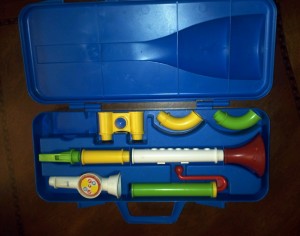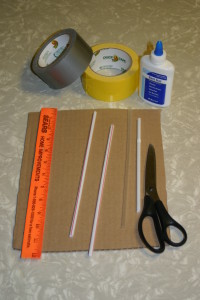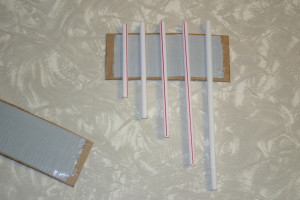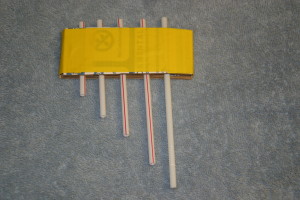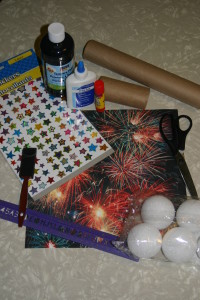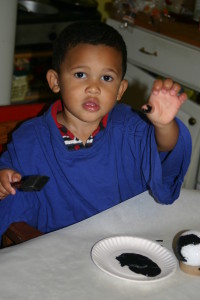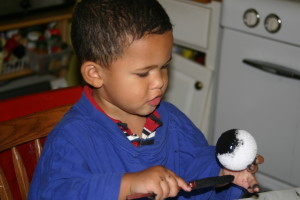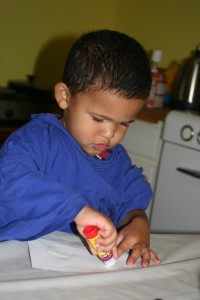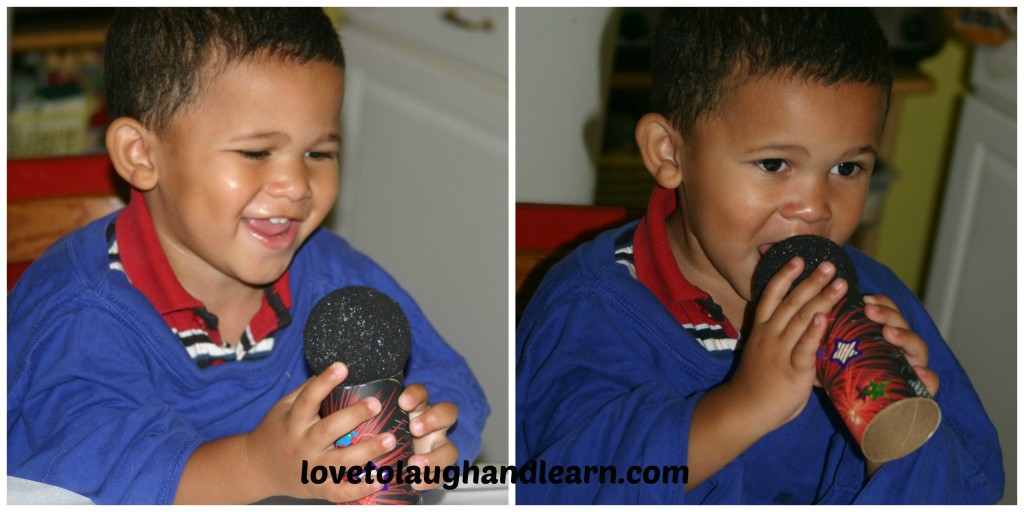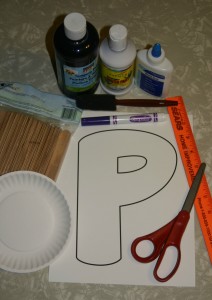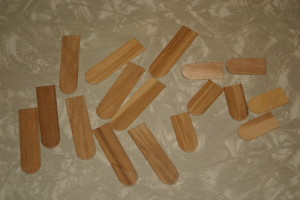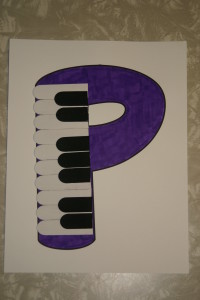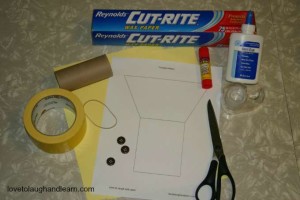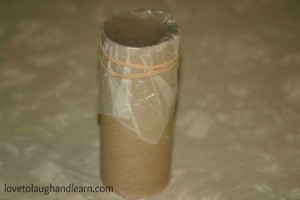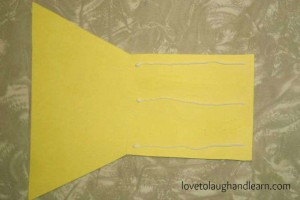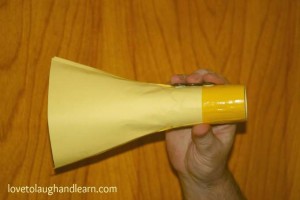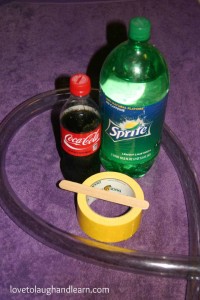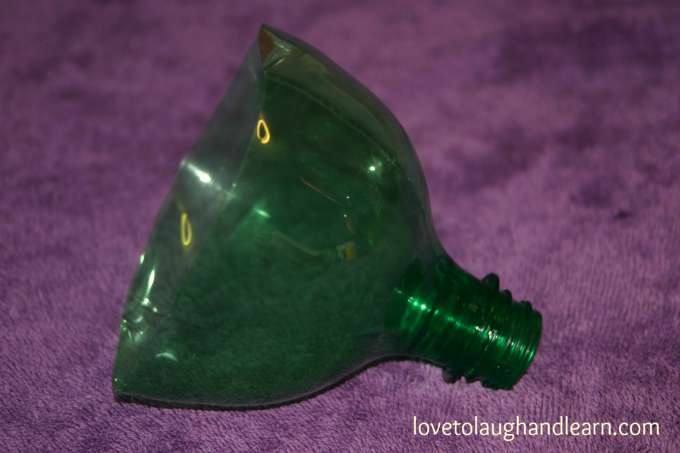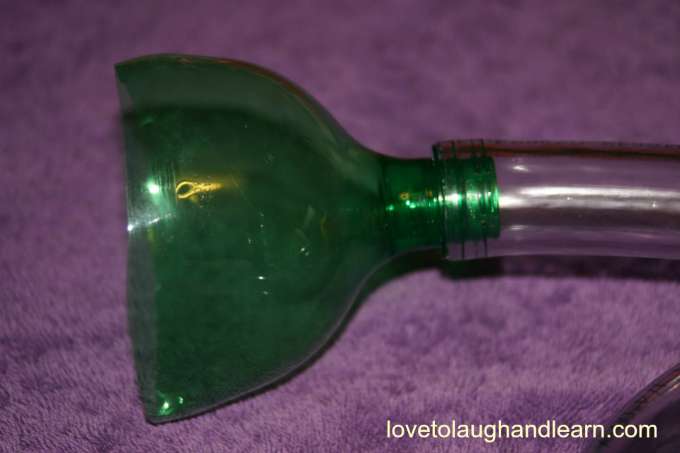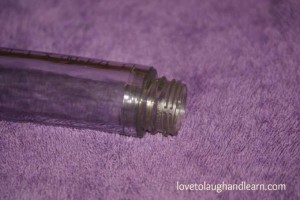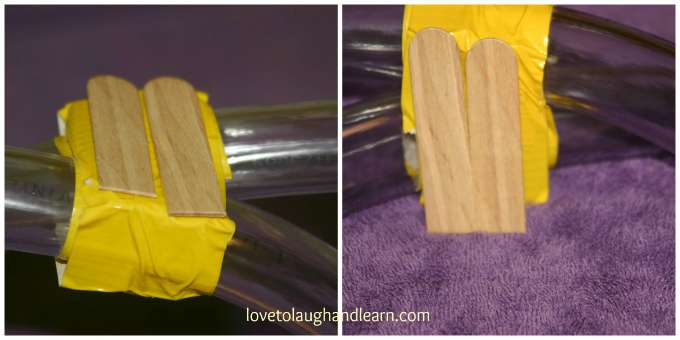Generally Having Fun with Music
This post, Generally Having Fun with Music, is written in collaboration with Shannon Wijnker, who used to blog on Mamamusing. Shannon is a music teacher and mother of four.
It has been a lot of fun writing the posts “Fun with Music” in collaboration with Shannon. Our posts have covered the different instrument families. This final post, of the series, is about ways for your children to simply have fun with all kinds of music.
Shannon and I both agree that most learning for young children should come through play and experimentation. So dance around the room with your child, share your favorite songs from childhood or watch a musical together. Just generally have fun with music!
“If the parent values music, and makes it a part of their life, then their children will value music also.” – Shannon Wijnker
Shannon shared:
“Children learn best by constructing their own concepts and ideas, and by trial and error. They will learn how to create a variety of sounds. Some of which they will like and some they will decide they don’t. Your concept of what is acceptable sound may vary from theirs. But be patient and let them explore. Remember that it’s not just about making a beautiful sound, but playing and exploring the concept of sound.”
Contents:
Musical Sensory Bin
Musical Outings
Games Online
Another Resource: The Recorder Classroom
Story Time
Related Posts
Musical Sensory Bin
Shannon mentioned that the dollar store is a good place to pick up inexpensive instruments for the children to experiment with. Recorders are great choice. You can also find tambourines, kazoos, etc. I took Shannon’s advice and headed to the dollar store to pick up some instruments. I decided to create a musical sensory bin. I found several items in the party favor section and some in the toy section. I picked up a recorder and a toy microphone from the $1 bins at Target.
Items in my Musical Sensory Bin:
Beans (I bought at Dollar Tree)
Rice (I bought it at Costco. It was cheaper to get a big bag here rather than smaller ones
at the Dollar Tree.)
Hand Drums
Plastic Musical Clackers
Kazoos
Slide Whistles
Recorder
Microphone
Empty Plastic Containers (of all sizes)
Empty Oatmeal Box
Metal Spoons (I bought at Dollar Tree)
Empty Shoe Box
Rubber Bands
Plastic Easter Eggs
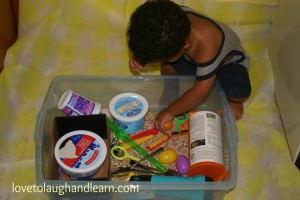
Jeremiah put beans and rice into different containers. We talked about the different sounds they made.

There were different types of whistles and kazoos for him to play with.
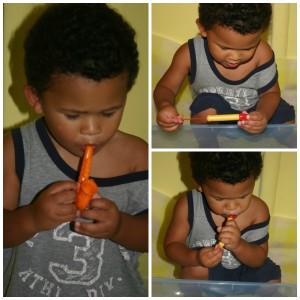
We stretched rubber bands around a box and listened to the different sounds they made when we plucked them.
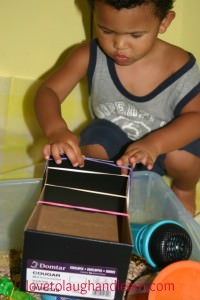
The microphone was a big hit. Don’t forget that your voice is an instrument you take with you wherever you go. (Fun with Music: Voices)
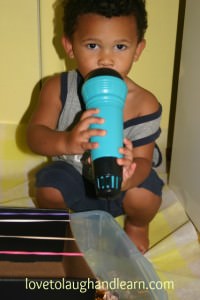
Using the spoon to drum on the different containers was also fun.
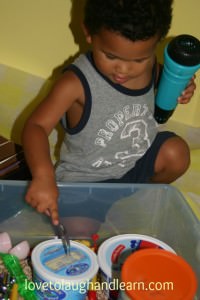
Jeremiah was almost 2 years old when I created this Musical Sensory Box. As you can see, he really enjoyed it. He has played with it on more than one occasion and I’m sure he will play with it many more times. The one thing that I noticed is that some of the whistles didn’t work very well. I will probably replace and add some better quality instruments, as I get the money, but this was a good place to start. As we have made the crafts on the different Fun with Music posts, we have added them to the bin. This was a place to start and as his interests grow and change we can add to or switch out instruments.
Shannon also wants to remind us to help our children explore sound within their own environment:
“You can talk about sounds being high and low. You can talk about the timbre (the quality of sound – how we can tell mom’s voice from dad’s). Encourage your children to explore sounds with their bodies and other toys/things they can find in the house. You don’t have to go out any buy instruments to explore sound and music.”
(top)
Musical Outings
In Indianapolis, you can find many places that give free outdoor concerts during the summer. Maybe you have the same opportunities in your area. Outdoor concerts are a great way to introduce your children to live music because they can sit in their own lawn chair, on a blanket or even get up and dance around a little. Expose your children to many types of music. Take the time to talk about what they are hearing, how it makes them feel and the different instruments they are seeing and hearing.
Shannon from Mamamusing wants you to know: “In London, there are several outdoor concerts and festivals in Victoria Park during the summer. One of the best is Sunfest (beginning of July). You can check out a video of my kids enjoying the multicultural music and dancing by clicking here.”
Games Online
Now that you have introduced your children to some of the various instrument families
in the orchestra, you may want to visit The Young Person’s Guide to the Orchestra. This
is a website created by Carnegie Hall which is a wonderfully FREE interactive online
game for young children to explore and learn more about the various instruments of the
orchestra. You will need to use a computer, because the game requires Adobe Flash,
which you can download for free (if you don’t already have this utility installed on your
computer).
There is also a wonderful set of books for children ages 4 to 9 years old that helps them learn different musical concepts. Along with the books the author, Sharon Burch, has a website with coloring pages and games for your child to enjoy and enhance their learning experience: Freddie the Frog Games and Coloring Pages.You can find more information about the books below in Story Time.
Another Resource recommended by Shannon from Mamamusing
“If you homeschool your children, a great resource for teaching them music (and how to play the recorder) is a magazine called “The Recorder Classroom”. I believe there are 4 issues printed so far. You can download both the music and accompanying mp3s online. They are fun to play and I find my students are motivated to learn the music, when they have great accompaniments to play along with.”
Story Time – There were so many books that didn’t fall under any of our other posts so I have included them here. You should really check all of them out. I really enjoyed reading them and I’m sure you and your child will too.
Before John Was a Jazz Giant: A Song of John Coltrane by Carole Boston Weatherford
Reading Level: Ages 5 to 9 yrs old
This is an interesting look at the influences on a great musician. The book shares the many different sounds and experiences that John faced as he was growing up; listening to Daddy play the ukulele or to big bands on the radio. The essence of the story it that John heard and listened to many things that lead him on his path of becoming a Jazz Giant.
Freddie the Frog series by Sharon Burch
Reading Level: Ages 4 – 9 yrs old
This series was recommended by Shannon Wijnker from Mamamusing. She uses this series in her music classes. Shannon says, “A great series to start kids learning music concepts and theory is “Freddie the Frog”. These are cute stories with a hidden agenda. My students love these books and ask for them again and again!”
Through the series of books your child will learn the names of notes; they will learn about rhythm, beat and tempo. Each book comes with a CD that includes the dramatized story and sing-along songs.
Adventure #1 – Freddie the Frog and the Thump in the Night by Sharon Burch
Freddie the Frog lives on the island of Treble Clef, with his parents. Join him in his adventure as he searches the island for the source of the thump.
Adventure #2 – Freddie the Frog and the Bass Clef Monster by Sharon Burch
Freddie the Frog awakes from hibernation to find out that he is no longer at home, on Treble Clef Island.
Adventure #3 – Freddie the Frog and the Mysterious Wahooooo by Sharon Burch
Join Freddie the Frog and his best friend, Eli the Elephant, as they discover tempos, rhythms, and beats on Tempo Island. Your child will enjoy learning to play their percussion instruments to the rhythm and beat along with Eli and Freddie
Adventure #4 – Freddie the Frog and the Secret of Crater Island by Sharon Burch
Freddie and Eli take on a new adventure. They seek to find the secret on Crater Island, along with the Blue Beetle Bugs.
Adventure #5 – Freddie the Frog and the Flying Jazz Kitten by Sharon Burch
Join Freddie the Frog and the Flying Jazz Kitten, on Treble Clef Island, as Freddie becomes a jazz sensation. They will learn how to use an instrument they have with them all the time, their voice. Freddie and the Jazz Kitten help your child learn about scat singing.
Froggy Plays in the Band
by Jonathan London
Reading Level: Ages 3 to 6 yrs old
Froggy sees a poster at school about a marching band contest and a big prize. When he asks his music teacher about it, she tells him to form a big band and practice, practice, practice. She helps Froggy and his friends as they work their hardest to become a great marching band. The one important thing the teacher tells them is, “Don’t stop for anything!” This is very good advice especially when they get to the end of the parade. Pick up this book and find out what happens to Froggy and his marching band when they didn’t stop for anything.
Instruments and Music
by Daniel Nunn
Reading Level: Ages 4 – 8 yrs old
This book is a great introduction to instruments and music. Your child will get to see pictures of many different instruments; some will be familiar and some will seem strange. There are instruments from many countries. Your child will learn what materials the instruments are made of and how they produce sound. I believe any child interested in music and instruments will enjoy this book.
Jazz Baby
by Carole Boston Weatherford
Reading Level: birth to 6 years old
This is simply a fun little book to introduce music and instruments to even the youngest “musician”. The text on each page starts with “Jazz baby, jazz baby” and then describes, in rhyme, some fun aspect of music; such as playing a horn or the drums. Your child will get to see children singing, dancing and playing instruments. I love this book. I think it’s absolutely adorable. I had to buy one for my grandson and one to have at my house.
Listen to My Trumpet!
by Mo Willems
Reading Level: Ages 4 to 8 yrs old
Piggie gets a trumpet and wants to show his friend Elephant what he can do on his trumpet. He blows and blows and all kinds of sounds come out of the horn, but is it music? Find out what Elephant has to say about Piggie’s playing and how Piggie responds.
Little Pig Joins the Band
by David Hyde Costello
Reading Level: Ages 3 to 6 yrs old
Little Pig wants to play an instrument like the bigger pigs but he is just too small for any of them. He watches as everyone chooses an instrument and marches around. Little Pig watches each of them march in different directions and play different songs all at the same time. Once a big accident occurs, he realizes there is a job for him. Read this adorable book to find out how Little Pig helps out.
Meet the Orchestra
by Ann Hayes
Reading Level: Ages 3 to 8 yrs old
This is a fun and well written book that covers many of the instruments that can be found in an orchestra. There are simple explanations of what the instruments look like and how they are alike or different from each other. Your child will receive an explanation of what the instrument sounds like. The illustrations are quite fun. Each musician is an animal, which will appeal to the younger crowd. This book makes a great introduction to instruments and the orchestra.
Music Is
by Lloyd Moss
Reading Level: Ages 4 to 8 yrs old
This is an enjoyable book written in rhyme. It talks of all the fun ways music influences our lives. Lloyd Moss captures my feelings about music. It is a happy, important aspect of my life everyday. He talks of music when you wake up and music when you go to bed. Music for your birthday, 4th of July and to ring in the New Year. Music in an elevator and sometimes on a phone. Music fills our lives even when we aren’t paying attention. What would life be like without music?
Our Marching Band
by Lloyd Moss
Reading Level: Ages 4 to 8 yrs old
This is a fun little book about a group of kids that loved playing their instruments. The story starts with them getting the instrument that they each wanted. They each practiced and practiced their parts separately and although they sounded a little rough in the beginning the sounds they made together were much different. Read this inspiring tale of how dreams and practice turned them into a marching band.
The Orchestra
by Mark Rubin & Alan Daniel
Reading Level: Ages 5 – 8 yrs old
This book is a wonderful introduction to music, instruments, musicians and the orchestra. It describes the different families of instruments in the orchestra: strings, woodwinds, brass and percussion. Your child will even learn different terms related to music such as melody, harmony, rhythm and tempo. The book covers a lot in simple descriptions your child can understand. I highly recommend this book as an outstanding introduction to music.
The Orchestra (Culture in Action)
by Liz Miles
Reading Level: Ages 8 and up
This is a children’s book, but as you can tell by the reading level, it is for a little older child. There is a lot of great information about the orchestra, music, musicians and composers. You could still use this with a younger child who has an interest in music because it is broken up into several different sections. Sometimes you will find more than one subheading on a page. The reason this is nice is that you can read a section or two at a time, to a young child, and save some for later. I wouldn’t use this book as an introduction to orchestras for a young child but it has much valuable information for a little older child.
The Philharmonic Gets Dressed
by Karla Kuskin
Reading Level: Ages 4 – 8 yrs old
As I first read through this book I was going to discard it as possible reading material for my posts on music but I had second thoughts. It is a silly book. Understand I usually like silly but I was taking my posts on music a little too seriously so I wasn’t going to suggest this book. The book goes through each step the one hundred and five members of the Philharmonic go through in getting ready for their performance that evening. It starts with them bathing and showering and then getting dressed. Oh, and it has every detail of them getting dressed; from putting on their underwear, socks or hose all the way to putting on their tuxedos or dresses. The further I read and the more I thought about it, I changed my mind and decided this would be a good book to include with my posts on music. Although it does it in a silly way, your child will get to see that the musicians are regular people with families and pets. They have to get ready for their job like everyone else. Your child will get so see some of the instruments and the different size cases they get carried in. I believe your child will have fun with this light-hearted book about the Philharmonic.
The Recorder and Other Wind Instruments (Let’s Make Music)
by Rita Storey
Reading Level: 6 yrs old and above
This book covers both types of wind instruments; woodwinds and brass. Your child will learn how the instruments are made and how they are played. It gives you examples of skills you will need to build to be able to play a wind instrument, like being able to blow out a long slow breath of air (without puffing out your cheeks). They will learn what it means to buzz your lips and how to do it. The illustrations are pictures of wind instruments and people playing them. Have fun learning about the many different wind instruments.
Saxophone Sam and His Snazzy Jazz Band
by Christine M. Schneider
Reading Level: Ages 4 to 8 yrs old
This is simply a “doo dilly dilly” silly book of two children and some sneaky jazz music. The music is calling but from where? Is it coming from the kitchen, the bathroom or from underneath the bed? Follow the children as they search for the music that is overtaking the house. They are having a toe tapping good time. After reading the book, or maybe even while you are reading the book, put on some jazz music and have some fun dancing to the “zoo zoo zing” once “the band is in full swing!”
Zin! Zin! Zin! A Violin
by Lloyd Moss
Reading Level: Ages 5 to 10 yrs old
This book is not simply about a violin (as I thought), it is actually a musical counting book. Not counting as in tempos but as in the way you count musical group settings; such as a solo, a duet, a trio, etc.. The story is told in a fun rhyming text. Your child will be exposed to many different instruments as well as the varied names for the different sized musical groups. Although the story goes up to a group of ten, they only tell you the correct names up to nine. So if you are curious, a group of ten is called a dectet. Be sure to share this with your child to find out what the special names for all the groupings are.
Related Posts
Music at an Early Age by Shannon at Mamamusing
Fun with Music: Overview
Fun with Music: Percussion Instruments
Fun with Music: Brass Instruments
Fun with Music: Woodwind Instruments
Fun with Music: Voices
Fun with Music: String Instruments
Fun with Music: Keyboards
Review: Rhythm! Discovery Center
Review: Peanut Butter and Jam Concerts
Bongo Boy Music School Review




















